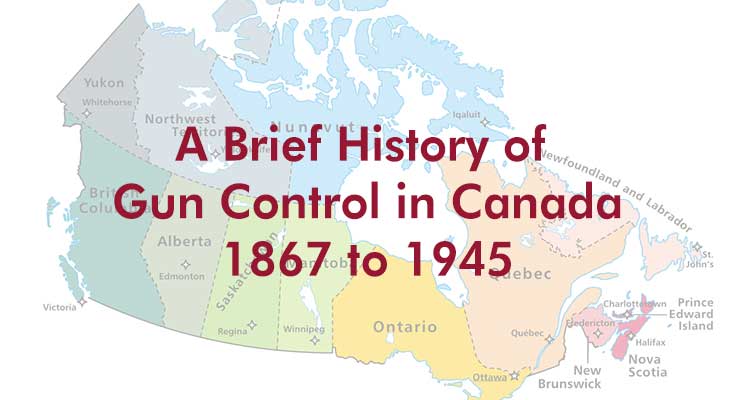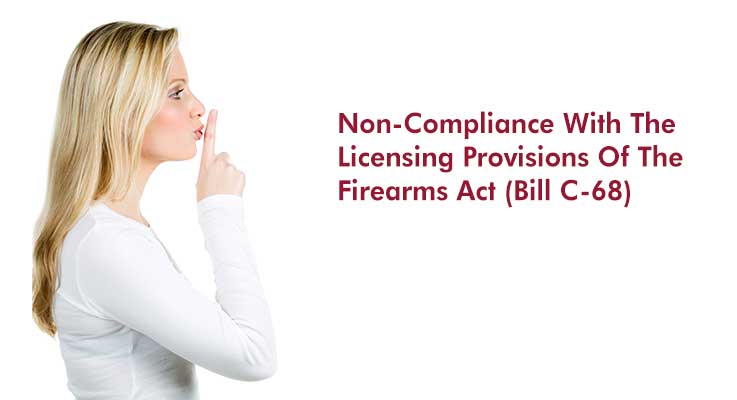Myth #1: Semi-automatics firearms are more dangerous than other guns.
False. Semi-automatic firearms are popular with many responsible Canadian gun owners because they offer reliability, accuracy, and durability. No real functional difference exists between semi-automatic rifles and shotguns commercially available today and any other type of action commercially available before 1910. The deaths that would have occurred with any hunting firearm designed totake game animals would have far exceeded the one death caused by firing numerous shots with a low-powered target firearm.
Myth #2: Cancelling the long gun registry will negatively affect pubic safety and will allow more tragic events to take place.
False. The long gun registry had no relevance in the shooting at Dawson College. The firearms used were “restricted” and are not affected by either the current government amnesty or the proposed legislative changes to the long gun registry. Under the proposed Bill C-21, the registry of restricted firearms is to remain intact and continue in operation. The elimination of the long gun registry will only eliminate the useless lists of non-restricted firearms, not the licensing where continuous verification is most important. NOTE: The proposed Bill does not affect the licensing system. The holder of a firearms licence will still be known to the police. The police will still know whether a firearm is at a particular location by virtue of the fact that a resident has a licence.
Myth #3: The licensing system screens out all dangerous individuals
False. The screening of applicants for a firearms license involves a record check for prior criminal charges or convictions and a screening for public safety issues. Only occasionally are the references interviewed or calls made to family members or employers if the license application indicates more investigation. The system was designed to eliminate undesirables from obtaining firearms and cannot predict the future misuse of firearms by deranged individuals without additional techniques not currently envisaged. Examination of questionable individuals, initiated only after the Dawson College incident, are an example
Myth #4: Police are powerless to remove firearms after a threat has been identified
False. Once an individual has been identified as a possible threat to public safety, even though a criminal act that has not yet been committed, the police have full authority to suspend a firearms license, seize the firearms and apply for a prohibition order, even based on hearsay evidence. If the police had been aware of the comments made on the website prior to the Dawson shootings, they would have had full authority to act.
Myth #5: The Beretta CX4 Storm is a high powered assault rifle and should be banned.
False. The Beretta CX4 Storm is a short barrelled civilian target rifle and is not used by any military in the world. It fires small pistol cartridges. Since it has a 16” barrel, it is deemed a “restricted” firearm and carries the same requirements for licensing and transport as a handgun. It can only be legally fired at an approved shooting range. A ban on this particular firearm due to the criminal misuse by one disturbed individual would be an ineffective, expensive knee-jerk reaction serving no public safety purpose.
Myth #6: Firearms owners should submit to psychological testing before being approved for a firearms license.
False. There are over 2 million licensed firearms owners in Canada. To test each and every one of these individuals would be insulting, prohibitively expensive and, ultimately, unnecessary as it is done at a particular point in time, and has little bearing on the future events that shape each person. Proper screening during the application process with continuous eligibility checks can be more than sufficient to weed out the criminal and irresponsible.
Myth #7: Guns should be centrally stored at gun ranges which will prevent firearms from being used in acts of random violence by their owners.
False. Central storage of firearms would be an irresistible magnet to criminals and terrorists. Most gun clubs and shooting ranges do not posses adequate security and the costs involved to set up such a program would be astronomical. There are estimated to be 15 million firearms in Canada. It will be physically impossible to store every one in secure, centralized locations. Without doubt, many more tragedies will occur if criminal “shopping malls” such as central storage locations are ever legislated.
Myth #8: A ban on all firearms would stop massacres such as this and protect the public against criminal use of firearms.
False. Firearms are very prevalent in our society and have proven to be a benefit to society. There areestimated to be up to 15 million firearms in Canada, owned by and estimated 5 million responsible individuals. To seize their property and restrict their freedoms due to the criminal use of a very small number is a violation of the rights of all Canadians. Similar programs in Britain and Australia proved to be prohibitively expensive and counterproductive –- their crime rates with firearms increased dramatically after their buy-back programs.
Let’s look at the cost alone of such a program: All property seized would have to be paid for at fullmarket value.
- 15 million firearms at an average cost of $800 = $12 billion
- Equipment buy back cost (estimated) = $2 billion
- Loss of business and employee buy-outs = ?
Proponents of a complete ban would state that if it saves one life, the cost is worth it. But, how many lives will it cost? These billions of dollars have the potential to save thousands of lives if directed to other areas such as medical research, increased police resources, etc.
Myth #9: We must toughen our guns laws to prevent an incident like this from happening again.
False. Although this incident was very tragic, random violence is rare in Canada. Many experts have opined that government cannot legislate against the insane acts of a disturbed mind. It is an axiom that enacting laws in the height of emotion creates bad law. That has been proven with the grossly expensive and ineffective firearms control measures enacted after the 1989 shootings at l’Ecole Polytechnique. Current firearms legislation enacted in C-68 was designed to fail since it was announced. It was based on control of legitimate firearms owners instead of criminals, as borne out in the December 2002 Auditor General’s report. The time has come to re-examine our preoccupation with the regulation of inanimate objects and focus on the root causes of such destructive behaviour. True experts in the field confirm this as the best approach.
Featured Image Credit: “Exile on Ontario St” under Creative Commons Attribution-Share Alike 2.0 Generic license.


